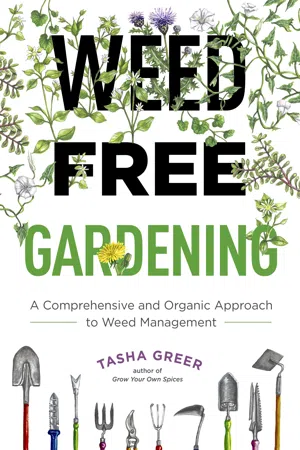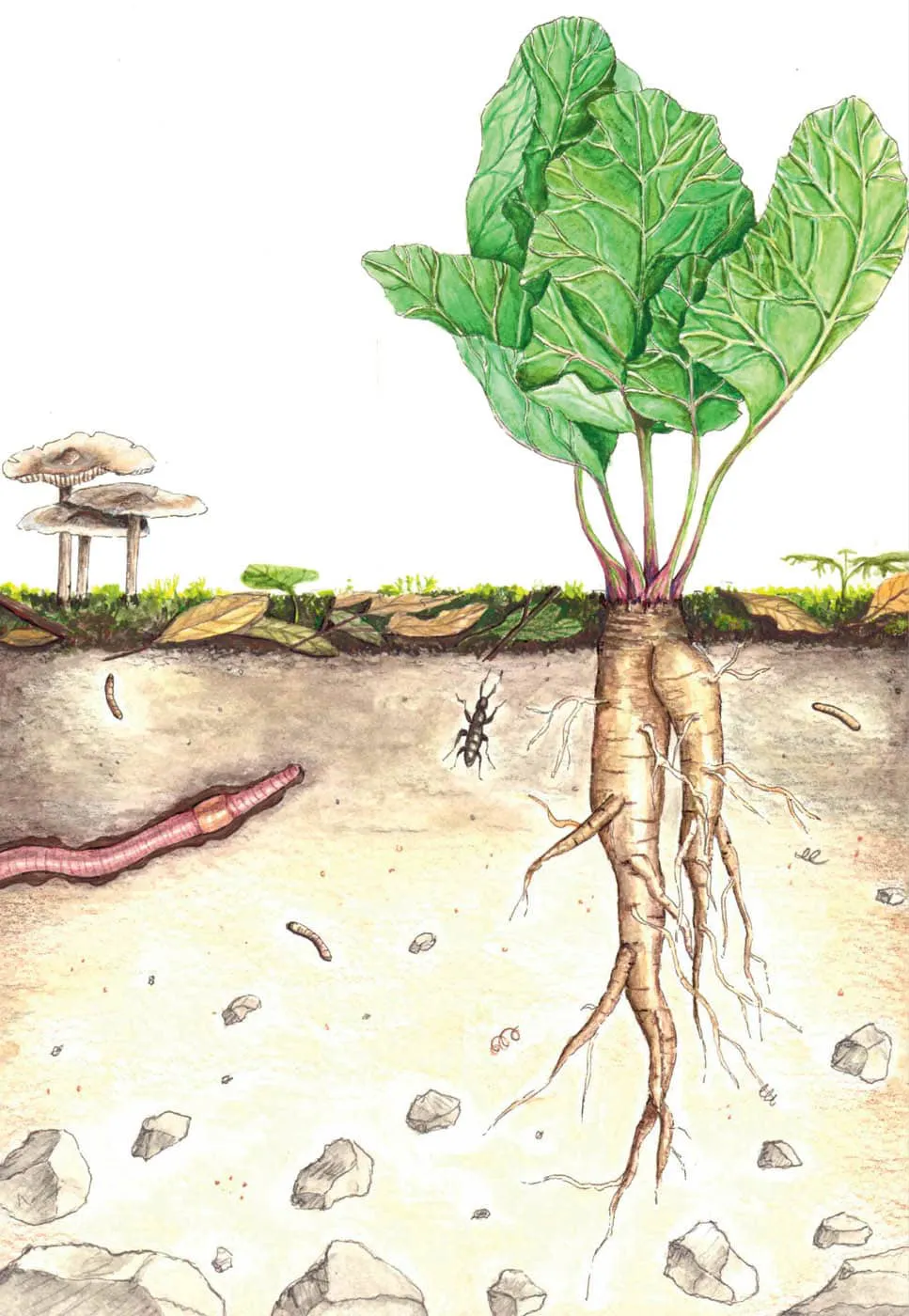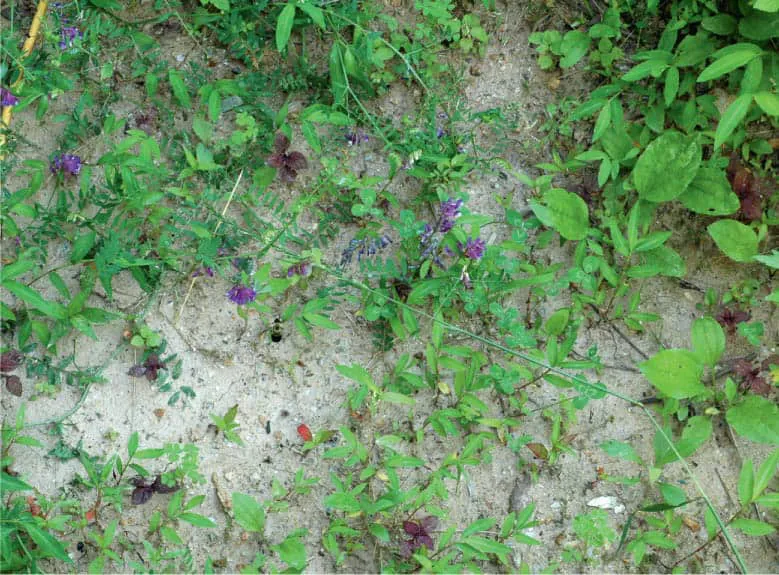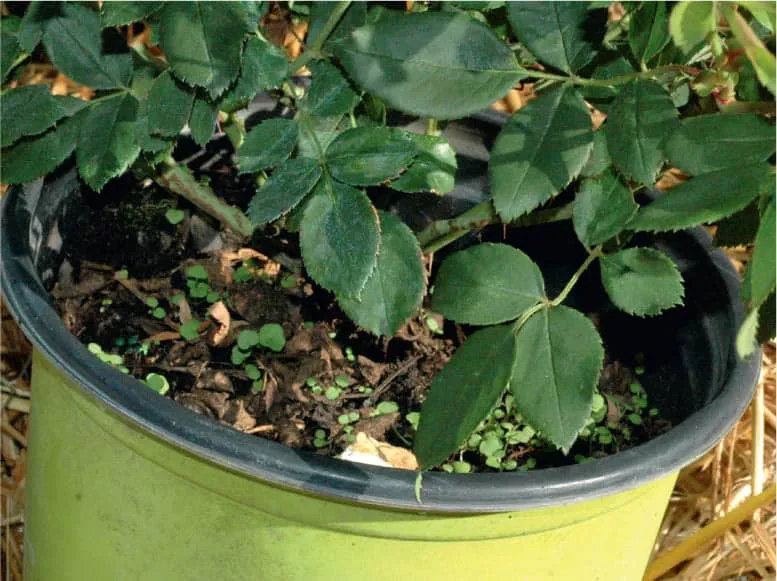
- 192 pages
- English
- ePUB (mobile friendly)
- Available on iOS & Android
eBook - ePub
About this book
Weed-Free Gardening presents a clear and easy-to-implement plan of attack to get even the most tenacious weeds under control without the need for potentially harmful synthetic herbicides.
Let’s face it: weeding is far from a homeowner’s favorite chore. But not everyone can afford to hire a landscape crew to keep the weeds at bay, and spraying chemical herbicides isn’t a smart solution for eco-conscious homeowners or pet parents. If that’s the case for you, the weed control prevention and control strategies outlined here by author Tasha Greer will have you growing flowers, vegetables, shrubs, and trees with little to no weed competition. Tasha’s organic approach hands you methods for both preventing weeds early in the growing season and managing weedy intruders year-round.
By following the practical guidance found in Weed-Free Gardening, you’ll:
Weed-Free Gardening is here with a plan to save you time, money, and energy, and help you fall in love with your garden all over again. If landscape beds overrun with weeds are making you want to give up on your garden, hope is finally here!
Let’s face it: weeding is far from a homeowner’s favorite chore. But not everyone can afford to hire a landscape crew to keep the weeds at bay, and spraying chemical herbicides isn’t a smart solution for eco-conscious homeowners or pet parents. If that’s the case for you, the weed control prevention and control strategies outlined here by author Tasha Greer will have you growing flowers, vegetables, shrubs, and trees with little to no weed competition. Tasha’s organic approach hands you methods for both preventing weeds early in the growing season and managing weedy intruders year-round.
By following the practical guidance found in Weed-Free Gardening, you’ll:
- Control annual weeds by disrupting their natural lifecycle
- Learn the whys, hows, and whens of weed-inhibiting mulching techniques
- Eliminate deep-rooted perennial weeds by eradicating them at their source
- Meet the best and most effective weeding tools available to homeowners
- Discover many ways to keep weeds out of the vegetable garden while ensuring healthy and productive soil
- Implement a practical plan to gain long-term control over weeds
Weed-Free Gardening is here with a plan to save you time, money, and energy, and help you fall in love with your garden all over again. If landscape beds overrun with weeds are making you want to give up on your garden, hope is finally here!
Frequently asked questions
Yes, you can cancel anytime from the Subscription tab in your account settings on the Perlego website. Your subscription will stay active until the end of your current billing period. Learn how to cancel your subscription.
At the moment all of our mobile-responsive ePub books are available to download via the app. Most of our PDFs are also available to download and we're working on making the final remaining ones downloadable now. Learn more here.
Perlego offers two plans: Essential and Complete
- Essential is ideal for learners and professionals who enjoy exploring a wide range of subjects. Access the Essential Library with 800,000+ trusted titles and best-sellers across business, personal growth, and the humanities. Includes unlimited reading time and Standard Read Aloud voice.
- Complete: Perfect for advanced learners and researchers needing full, unrestricted access. Unlock 1.4M+ books across hundreds of subjects, including academic and specialized titles. The Complete Plan also includes advanced features like Premium Read Aloud and Research Assistant.
We are an online textbook subscription service, where you can get access to an entire online library for less than the price of a single book per month. With over 1 million books across 1000+ topics, we’ve got you covered! Learn more here.
Look out for the read-aloud symbol on your next book to see if you can listen to it. The read-aloud tool reads text aloud for you, highlighting the text as it is being read. You can pause it, speed it up and slow it down. Learn more here.
Yes! You can use the Perlego app on both iOS or Android devices to read anytime, anywhere — even offline. Perfect for commutes or when you’re on the go.
Please note we cannot support devices running on iOS 13 and Android 7 or earlier. Learn more about using the app.
Please note we cannot support devices running on iOS 13 and Android 7 or earlier. Learn more about using the app.
Yes, you can access Weed-Free Gardening by Tasha Greer in PDF and/or ePUB format, as well as other popular books in Biological Sciences & Horticulture. We have over one million books available in our catalogue for you to explore.
Information
PART ONE
WEED PREVENTION

Prevention is the act of stopping something from happening, and it’s the single most critical component of weed-free gardening. Weed-free gardening starts with understanding weed behavior and identifying specific risk points for invasions. Then, you can decide on reasonable, strategic actions to prevent those unwanted future outcomes.
That progression of steps seems simple enough in theory. Unfortunately, many of us cut to the solutions part of the process before understanding the real problem. As a result, we take nonstrategic actions that waste time and exacerbate the situation.
Consider, for a moment, a non-garden-related example. If I leave a steak unattended on the coffee table at dog nose height and then let my dogs loose in the room, what will happen? You guessed it! They’d eat the steak. How would you prevent that from happening? Easy . . . don’t leave a steak on the coffee table.
Likewise, when deer eat our unprotected plants, they may seem like pests. However, we’ve just left the deer equivalent of a steak unprotected. The obvious answer to prevent deer from eating our plants is to keep plants out of reach of deer. Protecting a landscape, though, is harder than moving a steak. So, deer get labeled as pests.
"Prevention is the single most critical component of weed-free gardening."
The same basic idea applies to weeds. Bare, underoccupied, or heavily fertilized soil is like a steak for weeds—only WAY BETTER. Soil isn’t a one-time meal. It’s a place to settle down, harvest a continuous supply of free food and water, start a photosynthesis factory, participate in social networks using the rhizosphere (the place where plant roots and soil life collaborate), raise baby plants, and live a happy life. Open soil is like a move-in ready, self-sufficient homestead with free Internet.
One of the creators of the permaculture philosophy, Bill Mollison, is credited with giving voice to the idea that in our landscapes, the problem is often the solution. When it comes to weeds, I totally agree. We often garden in ways that create and exacerbate weed invasions by leaving soil bare or unoccupied or by inviting weeds in with other mistakes. Thankfully, our gardening practices can also be the solution when it comes to managing our weeds organically.
Weed prevention starts by acknowledging the ways we encourage weeds in our gardens. Here are some of our most common gardening mistakes that cause weeds.
- We garden where other plants were already established without removing them or actively preventing their return.
- We expose existing seeds stored in the soil with our tilling, harvesting, and weeding practices.
- We leave soil unprotected by not keeping it densely planted or sufficiently mulched.
- We apply too much fertilizer to the surface of soil, which in turn acts like a free buffet for fast-growing, nutrient-hungry weeds.
- We water the top few inches (approximately 7.5 cm) of soil, too often creating ideal conditions for running or self-layering plants to spread.
- We water too shallow and too infrequently for our moisture-loving plants to set deep roots and hold their ground against weeds.
- We don’t address drainage problems before we plant and end up with overly dry or wet soil that serves as a breeding ground for weeds that arrive to correct those situations.
- We try to grow plants in unsuitable locations and inappropriate climate conditions or neglect them, then assume it’s the weeds’ faults when our plants don’t grow.
- We don’t realize descriptions like “easy to grow” or “fast-growing” are code for “may become a weed unless you control the spread.”
- We bring in seeds, soil, potted plants, and other purchases that contain weeds and sow our own problem plants.
- We fail to adjust our gardening practices when changes in our environment necessitate it.
Fundamentally, to be weed-free gardeners, we need to stop blaming plants for taking over and instead look at ways to make soil less attractive to weeds. We also need to think of the garden as a habitat for plants and other critical life forms within a larger ecological system.
A good place to start is by studying the plants you consider weeds in your landscape now. Use those pesky plants to get comfortable asking and answering these three key weed prevention questions.
Three Key Weed Prevention Questions
- 1) How did these weeds get here?
- 2) Can I prevent them from spreading or showing up again?
- 3) How will I fill or protect this niche going forward?
Using these simple questions can help you determine effective and ecologically focused weed prevention methods for your garden. Let’s take a closer look at how to strategically answer these questions.


There’s no room for weeds in this raised bed filled with grapes, honeyberry, and oregano.

My great Pyrenees puppy, Luna, is natural-born seed spreader, which is one reason she’s not allowed in my vegetable garden where I have limited weed tolerance.
How Weeds Get into Our Landscapes
The first question is usually the easiest to answer because there are three main ways that weeds get into our landscape.
- 1) They are already present in the soil.
- 2) They are brought in by natural forces, such as pets, wildlife, wind, and water flow or colonization (spreading by rhizomes, solons, runners, layering, and self-sowing).
- 3) They come in with seed/plant purchases or gifts.
Identifying the most likely source of weed outbreaks can help you narrow down the tactics and will be effective for control. That will also answer the second question about whether you can prevent them from showing up again.
For the first two types—weeds that are already present or brought in by natural forces—maintenance tactics targeted toward suppression and continuous control will be essential to keep them from getting a roothold in your garden. Most of this book is devoted to managing those kinds of weeds, since they are the most prevalent in our landscapes.
With bought-in or brought-in weeds, though, you can manage those risks immediately. Let’s look at some common scenarios that lead to new weed problems and ways to address them.

This bare soil will be filled in with a broad array of weeds in no time.

When I bought this plant three days earlier, there were no visible weeds. After watering and waiting a few days, weeds in the pot are germinating.
Problem: The Transplant Takeover
You planted a gorgeous new perennial plant in your garden and now the area around it is full of weeds. If those weeds aren’t cropping up in other locations, they were either disturbed by digging or in the pot and planted by accident.
With a weed-free gardening approach, you know in advance that soil disturbance triggers weed seed germination. Also, just because potted plants are picked free of weeds to make them attractive, doesn’t make them weed-free. Luckily, you don’t have to ...
Table of contents
- Cover
- Title Page
- Contents
- Introduction: The War on Weeds, Why It Can’t Be Won, and How to Make Peace in the Garden
- Part One: Weed Prevention
- Part Two: Maintenance
- Part Three: Reconciliation
- Part Four: Creating Peace in the Garden
- References
- About the Author
- About the Illustrator
- Acknowledgments
- Index
- Copyright